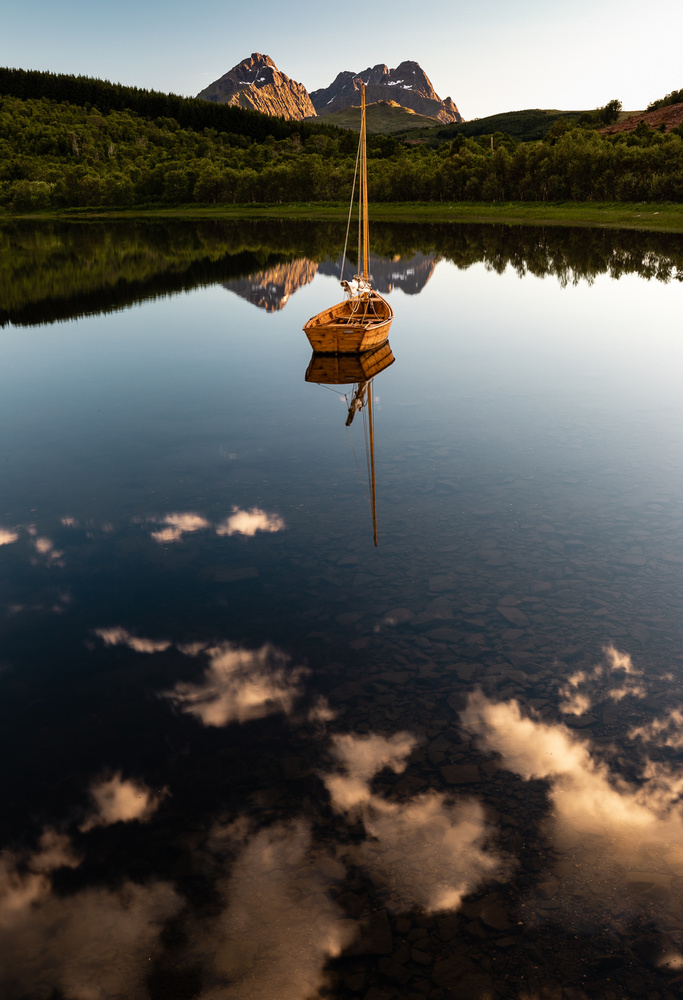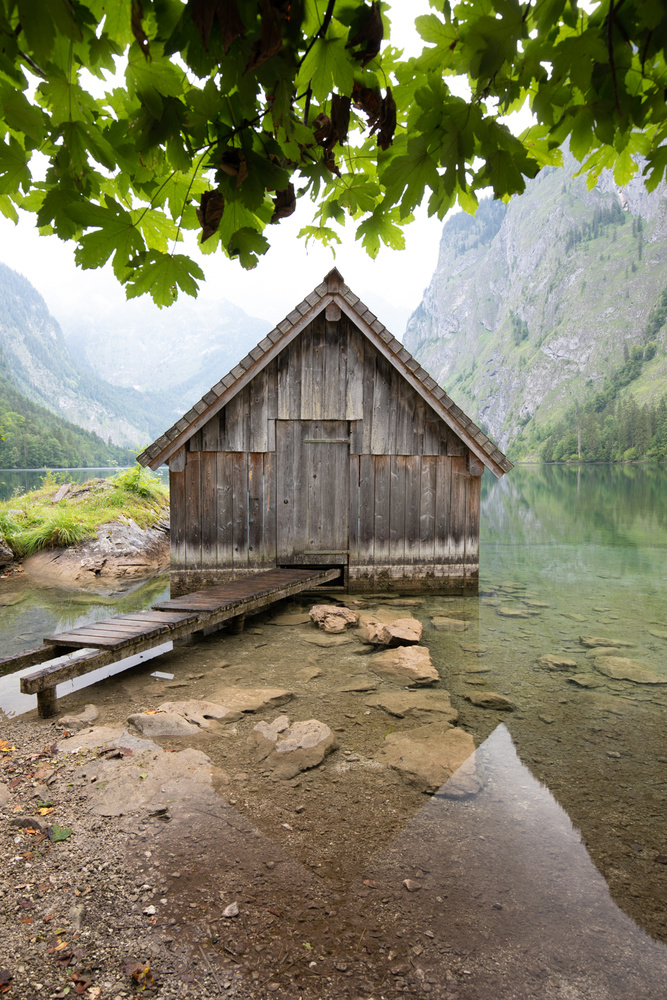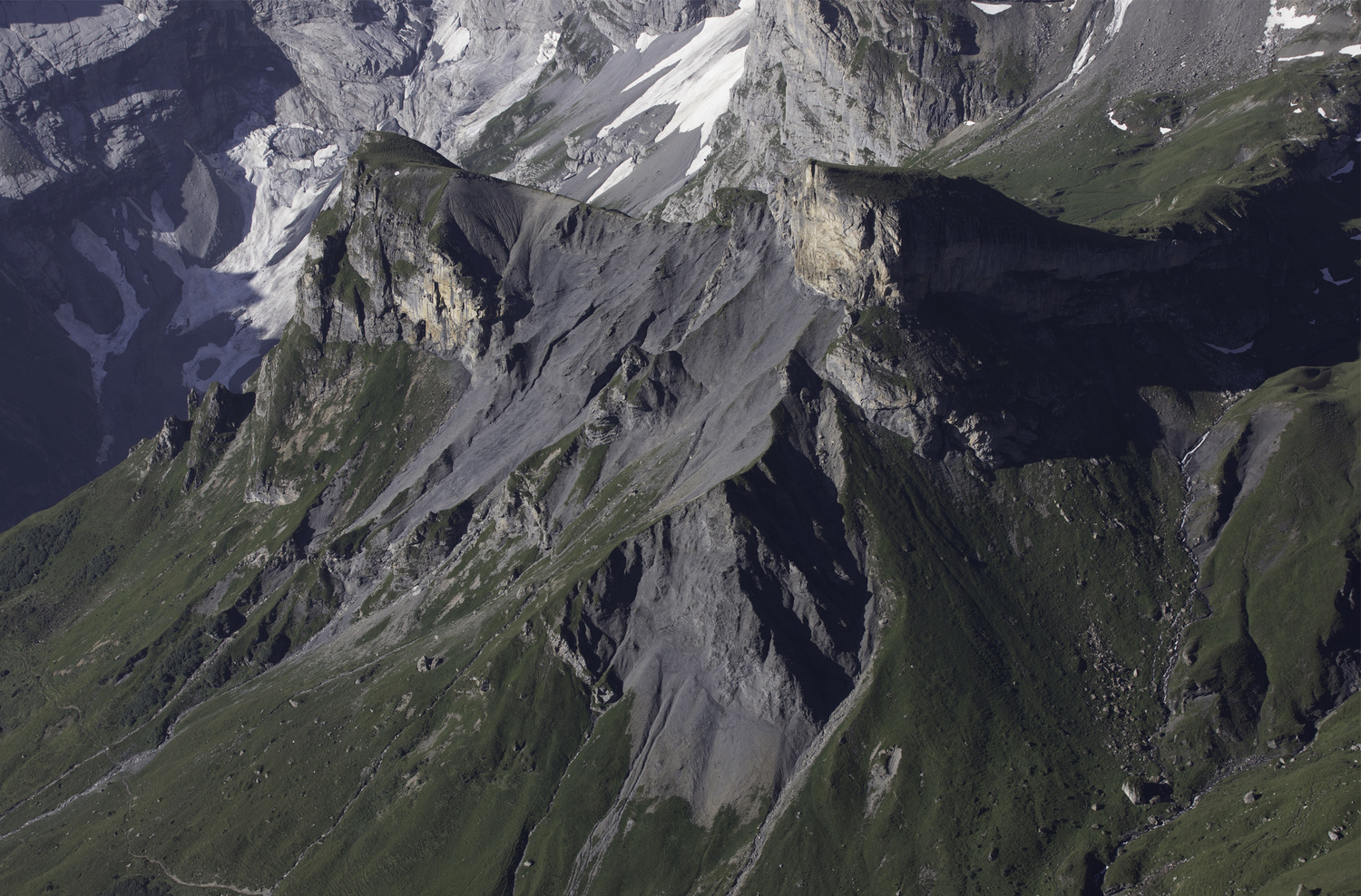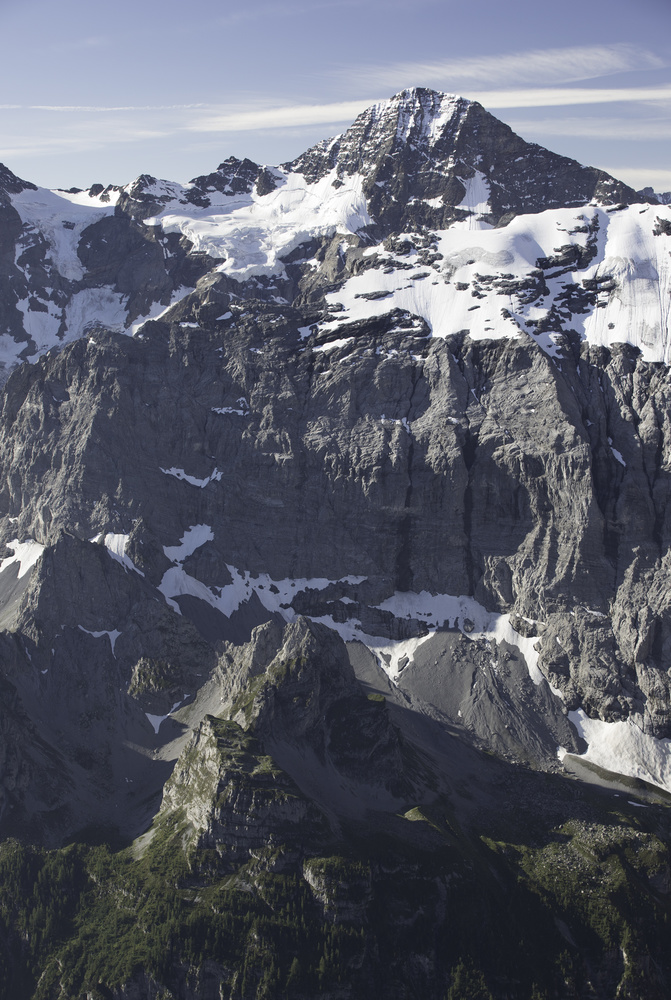Given the choice to bring one accessory when shooting landscapes, it absolutely needs to be a circular polarizer and this is why.
I recently got back from a trip where I was tasked with taking very minimal gear with me because of weight restrictions. I know many of us enjoy having all the options in the world to shoot with but it can be really liberating to take as little as possible and shoot with a minimal setup. While I was packing, I realized that I absolutely didn’t want to leave home without my circular polarizer and in my opinion it’s the most important accessory you will own as a landscape photographer; I would even go as far to say that it’s more important than a secondary lens. As long as you have a camera, lens, and tripod, the next thing in your bag should be a circular polarizer (CPL).
Reflections
If you have ever read anything about using a CPL before you will know that cutting out reflections is its most used application. I think many of those articles leave out a key point though, and it’s the ability to manipulate reflections. Yes you can turn a CPL to completely cut out reflections but realizing that it’s more than just an on/off “switch” is key to getting to the next level when shooting with a CPL.

This shot was taken using a CPL, but still has a lot of reflection left in the photo. The key here was that I wanted to cut through some of the reflections but not all of them. You’ll notice on the right side of the image you can see through the water enough for the rocks to appear but there’s still enough reflection for the clouds in the sky. It’s in these types of photos where you really start to see the creative power you have in the smallest item in your kit.
Just in case you’ve never seen what a CPL can do to fully cut out reflections, above is an example. Both images are untouched and straight from camera. Using a polarizer can completely change your ability to capture photos that you aren't able to do otherwise. This isn't something you can fix in editing or manipulate in Photoshop and should be a prime reason why you always have one with you.
Haze
Haze can absolutely ruin a sunrise you forced yourself out of bed for or that sunset you set up and patiently waited hours to capture. This actually happened to me far more often than I’d like on my recent trip but thankfully I was able to salvage some moments using my CPL.
These are two examples I shot specifically to showcase how much haze you can remove with a CPL. Both of these are completely unedited aside from aligning them in Photoshop (was handholding a 70-200mm lens) and adjusting exposure to match. If you want the scientific explanation of how this is possible, check out these slides from MIT. The quick explanation is that haze is essentially moisture and particles in the atmosphere that reflect light. By using a CPL, you cut out some of those reflections just like when your shooting a lake. There are editing techniques to remove haze from your image but you typically cannot push those very far without the images looking over saturated and muddy.
Saturation
Something not quite as obvious when using a CPL is its ability to create more natural saturation in your images. I say natural saturation because it does more than just add saturation to your image as though you were adjusting a slider in Lightroom.
As boring as this example is, it's perfect for representing the saturation you gain from using a CPL. You'll notice the reflections in the water being removed, but pay close attention to the wood in the image. Notice on the walkway that the wet wood creates a small amount of reflection and the CPL cuts right through those reflections to reveal a deeply saturated wood. Also look at the wooden walls of the boat house to see the difference in color and saturation.
One of the best ways to utilize this natural saturation is within a lush forested shot. Shooting at a river or waterfall tends to have a lot of moisture. That moisture builds up on the surrounding plant life creating small reflections on all the foliage in your shot. By being able to cut through those reflections, it produces a saturation you cannot simply add in during an edit.
Drawbacks
There are downsides and precautions to using a CPL but they are few and far between. Polarizers do cause a bit of light loss, roughly about one to two stops depending on the polarization intensity. Thus, if you are trying to shoot handheld, you might have to shoot without one if there isn't enough ambient light.

Notice the dark sky above the boat
The biggest drawback is that dark area in the sky that it can create in your shots. You can see the effect in this image right above the boat. Some photographers try to avoid having these in their shots but I’ve seen a plethora of portfolio work where you can notice a bit of the dark sky effect. Personally I don’t mind it unless it’s distracting in my image. It comes down to your personal preference and what you want your final images to look like.
Bonus
What if you used that dark sky to your advantage? While it might not be the effect you want in some photos, you can potentially use it as a creative tool.
Knowing my CPL can create dark areas of the sky, I used that purposely when taking this image. By rotating the polarizer to darken the sky as much as possible, it creates these rich blue tones that separate the sky with the foreground. When I got into Lightroom and converted to black and white I was able to create extreme contrast between the foreground and background. I talked about this editing technique briefly in a video I made about Lightroom.
Conclusion
There are many other items you can get away without having, but a CPL does so much you can't replicate otherwise. I cannot stress enough how important it is to have one in your kit. Personally, it’s far more important than any other filter and should likely be on your lens the majority of the time anyway. If this is something you don’t have already, do yourself a favor and get one immediately.
I’d love to know what you think. Do you think there’s anything more important than the circular polarizer as an accessory? Is it more important than the second lens in your bag? Feel free to share some of your favorite shots you couldn't have captured without using one.

















I just picked up a Canon 16-35L IS F4 for a trip to Grand Tetons and Yellowstone. I’m going for the wildlife but thought I would probably have time for some landscapes waiting for them, I should look into adding one of theses I like the affects it has on the images above.
That is the lens I shot a lot of these photos on! I can't recommend a CPL enough, if the article didn't make that clear hehe :)
What CPL would you recommend?
I have a B+W I've used for 6+ years and a newer one that's part of mine Wine Country Camera system. Both are great but I'd suggest reading up on more options to find some comparisons. When I bought my first one in 2011 there weren't as many options.
Ryan did a good writeup on the newer version of the CPL I own:
https://fstoppers.com/originals/fstoppers-reviews-bw-xs-pro-kaesemann-hi...
That said I'd look for some comparisons and reviews. Both Breakthrough and NiSi are great brands to look into! If you need anymore help don't hesitate to ask.
But according to Tony Northrup you can get the same result in post /sar
You absolutely cannot remove reflections in post - only a POL filter can do this. You can darken the sky in post, for sure, but you run the risk of odd haloing effects at edges if you overdo it.
Totally agree!
Well apparently you're wrong.
Physics not opinion. Northrup should look it up.
You'd think he wouldn't need to.
.
https://www.youtube.com/watch?v=YcZkCnPs45s
I suggest not drinking anything when you watch without some sort of protection plan on your computer. You might spit as an involuntary reaction.
Okay I normally don't have anything bad to say about the Northrups but this was a terrible take on the subject. The example photos are an awful representation of what a CPL does.
Personally I think a CPL is the best bang for your buck that you can buy to improve your photos in landscape photography. Spend less than $100 and completely open up new worlds of results.
Damn!
Although not my personal fav channel, I never thought of them as that bad... This one though, this was bad ... and the B+W infomercial cuts, c’mon
The Northrups are very smart and tend to be very good in sussing out technology from the point that they begin studying it. But when they try to "reverse engineer" old concepts without really having studied how those old concepts actually came to be, their reverse engineering is often wrong. That's where I find myself saying, "No, Tony, that is not how that happened."
.
Jeff, come on. No need for that.
Tony does bring a few tips and points that some people *should* think about, but I agree with many he does fail to show the upsides of a CPL filter in a way that he should. The video isn't balanced enough.
.
I know this isn’t related to landscape photography, but I find using a CPL most beneficial for real estate photography when removing glare on shinny surfaces like glass tables and polished hardwood floors.
I thought about including more reasons outside of landscape photography. This is definitely a huge reason to own one if you shoot any form of architecture. There are a ton of other practical and real world uses for owning one that I couldn't fit in here.
Oh for sure and I thought the article was great as is. I just remember the first time I thought to use a polarizer indoors and was blown away by how much detail i could recover just by rotating my CPL. I'm surprised to hear some people that also work in RE industry that don't use it, but then again removing it every time you shoot a polarized window is kind of a pain. But to each their own I suppose!
I'll use one for portraits to cut down on a sweaty or oily face. For some folks, asking them to wash their face just doesn't seem like a good option.
I do use polarizers for people with shine that can't be killed by normal techniques--like me. I'm darker skinned and extremely oily and often sweaty. I've worked on camera a bit, and I know that really good professional foundation (professionally applied) can handle it, but that's a daunting proposition in most retail photography cases, such as an entire family outdoors.
Great article. I would like to say though that the circular polarising lens does not remove all reflections. Only polarised reflections, not direct reflections (as far as I am aware, I am not a pro). Try it out and see what reflections remain and which ones disappear as you rotate the filter. This post is aimed at beginners as they may think all reflections can be removed, but as you see in the lake cabin even the wood panels retain some reflection and elsewhere in the photo.
I can tell you from personal experience, they don't keep you from reflecting on your past failures. ;-)
Metal surfaces don't polarize the light they reflect, so those reflections are not reduced by a "polarized light filter" (to be more accurate).
Those are excellent points Chris! There is also a lot of dependency on the angle you are shooting relative to where the sun is sometime allowing you to cut out a lot of reflects and other times not as much. I didn't want to get into too much detail as that may have taken a lot more words. Hopefully the pictures speak for themselves!
Actually I never take CPL from my lens when doing outside portraiture. It makes backgrounds so much more interesting that I can't believe that anyone does portraiture without it ;)
I think it's the first item any new photographer should pick up after a camera and lens. I'd even go as far to say to get it before a tripod unless your only wanting to shoot astro or landscapes.
My Problem with polarizer is when I am shooting panos. Then it's not usable... the sky is just completely unusable.
...or with ultra wide angle lenses with a sky.
As stiching panos requires additional work, you can as well do a one swipe with polarizer (for the non-sky elements) and the other one without (just for the sky) and blend them together in post. It requires, of course, an extra 15 minutes in post, but if the result seems worth the effort, then it's a one way to try. :)
That isn't necessarily true. Having clouds in the sky completely fixes that issue and ideally I want some form of atmosphere in my sky. Sometimes that isn't the case like the image of the boat that I put here where there are clouds and enough blue sky to have that dark sky effect. As Andrzej pointed out, there are ways around it that might be worth the extra effort.
That said, I see a ton of work from some of the most well known landscapers around that were clearly shooting with a Polarizer.
I seldom use polarizing filters but when I do, I use them to cut down harsh reflections on a stream that make exposure really difficult. Too much reflection will cause the rest of the image to be too dark. Over expose and the whites are even more blown out. Use a polarizer to tame the reflections and the rest of the exposure falls into place. It's a miracle.
The MIT slides:
(https://ocw.mit.edu/courses/electrical-engineering-and-computer-science/...)
explain why I wear sunglasses while driving in the rain.
Clearly to be cool, haha!
I think their intention is that it cuts the reflections off the roadway. Granted I think this is all dependent on the road. I'm sure all of us have driven on roads that reflect and don't reflect when it's raining. That said, I have never driven with sunglasses while raining considering it's normally much darker.
In Oregon it usually rains on bright sunny days. I don't wear them at dusk, night, or in environments.